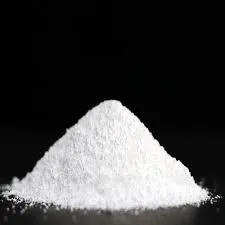Understanding Additives in Plastics
Plastics are an integral part of modern life, making their way into innumerable products from packaging materials and household items to automotive parts and medical devices. However, the remarkable versatility of plastics is largely owed to the incorporation of additives. These substances, which are not base polymers themselves, play critical roles in enhancing the properties and performance of plastic materials. This article will explore what additives are, the types used, their functions, and their significance in the plastic industry.
What Are Additives?
Additives are materials that are combined with base polymer resins to modify their properties and tailor them for specific applications. They can be natural or synthetic and often make up a small percentage of the total composition of a plastic product. Different additives can change the physical, aesthetic, and chemical qualities of plastics, making them more effective for various applications.
Types of Additives
There are several categories of additives commonly used in plastics
1. Stabilizers These additives improve the stability of plastics under various environmental conditions. For instance, UV stabilizers protect against the degrading effects of ultraviolet light, while thermal stabilizers help prevent changes to plastic during processing and use.
2. Plasticizers These substances increase the flexibility and workability of plastics. They are crucial in applications where a soft or pliable material is required, such as in vinyl flooring or for certain types of medical tubing.
3. Fillers Fillers are added to reduce costs and improve certain properties of the base plastic. They can enhance mechanical strength, thermal resistance, or impact resistance. Common fillers include talc, calcium carbonate, and glass fibers.
4. Colorants These additives provide color to plastics and can affect other properties such as UV stability. Dyes and pigments are the primary components used for coloring plastics, allowing manufacturers to produce aesthetically pleasing products.
what is additives in plastics

5. Antioxidants These are essential for protecting plastics from oxidative degradation, which can occur due to exposure to heat, light, and oxygen. Incorporating antioxidants helps extend the life of plastic products.
6. Flame Retardants These additives enhance the fire resistance of plastics, making them suitable for use in electronics, construction materials, and automotive applications where safety is a concern.
7. Antimicrobial Agents Used in products that require hygiene, such as medical devices and food packaging, these additives inhibit the growth of bacteria and mold.
8. Processing Aids These facilitate the manufacturing process by improving the flow of the plastic during molding and extrusion, thus enhancing efficiency.
The Importance of Additives
The importance of additives in the plastics industry cannot be overstated. They not only enhance the physical properties of plastic materials but also define their characteristics and expand their functionality. For instance, without the proper combinations of additives, many plastics would be brittle, unable to withstand extreme temperatures, or prone to degradation by environmental factors.
Furthermore, additives contribute to sustainability efforts within the plastics industry. Innovations such as biodegradable plastics and recycled content are possible due to advanced additives that help achieve these environmentally friendly goals. By modifying the chemical structure or behavior of polymers, specialized additives can improve the end-of-life management of plastic products, making them safer for the environment.
Conclusion
Additives are fundamental to the application and feasibility of plastics in a variety of industries, from consumer goods to advanced technological applications. Their diversity in types and functions allows plastic manufacturers to tailor their products to meet specific performance standards and consumer needs. As the global focus on sustainability and environmental protection grows, the development of eco-friendly additives will play an essential role in the future of plastic production. By understanding and utilizing these additives, industries can continue to innovate while addressing environmental challenges associated with plastic use.

